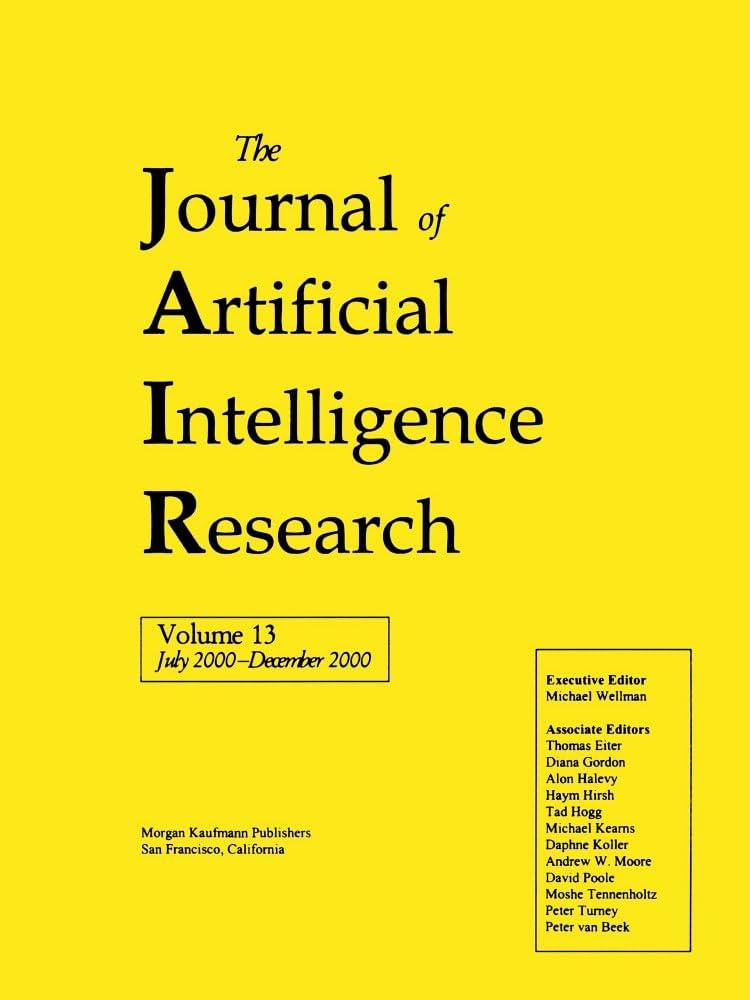用启发式搜索求解守望者路线问题
IF 4.5
3区 计算机科学
Q2 COMPUTER SCIENCE, ARTIFICIAL INTELLIGENCE
引用次数: 0
摘要
本文用启发式搜索方法解决了一般离散图上的守望者路径问题。给定一个图,一个视距(LOS)函数和一个起始顶点,任务是(离线)找到通过图的(最短)路径,使得图中的所有顶点至少被路径上的一个顶点可视地看到。WRP是一种联想问题,但不同于图覆盖和映射问题,后者是在未知图上在线完成的。我们将WRP形式化为一个启发式搜索问题,并使用基于a *的算法对其进行最优求解。我们开发了一系列可接受的启发式,难度和准确性越来越高。我们的启发式算法将底层图抽象为基于不相交的顶点簇的不相交视距图(disjoint line-of-sight graph, GDLS),使得同一簇中的顶点具有到同一特定顶点的LOS。我们将GDLS的最小生成树(MST)和旅行推销员问题(TSP)的解作为WRP的可接受启发式解。我们从理论上和经验上对这些启发式进行了研究。然后,我们展示了如何修改最优方法(通过智能地修剪掉大的子树)以获得具有和不具有约束保证的各种次优解。这些次优求解器比最优求解器更快,扩展的节点更少,而解决方案的质量只有轻微的降低。本文章由计算机程序翻译,如有差异,请以英文原文为准。
Solving the Watchman Route Problem with Heuristic Search
This paper solves the Watchman Route Problem (WRP) on a general discrete graph with Heuristic Search. Given a graph, a line-of-sight (LOS) function, and a start vertex, the task is to (offline) find a (shortest) path through the graph such that all vertices in the graph will be visually seen by at least one vertex on the path. WRP is reminiscent but different from graph covering and mapping problems, which are done online on an unknown graph. We formalize WRP as a heuristic search problem and solve it optimally with an A*-based algorithm. We develop a series of admissible heuristics with increasing difficulty and accuracy. Our heuristics abstract the underlying graph into a disjoint line-of-sight graph (GDLS) which is based on disjoint clusters of vertices such that vertices within the same cluster have LOS to the same specific vertex. We use solutions for the Minimum Spanning Tree (MST) and the Traveling Salesman Problem (TSP) of GDLS as admissible heuristics for WRP. We theoretically and empirically investigate these heuristics. Then, we show how the optimal methods can be modified (by intelligently pruning away large sub-trees) to obtain various suboptimal solvers with and without bound guarantees. These suboptimal solvers are much faster and expand fewer nodes than the optimal solver with only minor reduction in the quality of the solution.
求助全文
通过发布文献求助,成功后即可免费获取论文全文。
去求助
来源期刊

Journal of Artificial Intelligence Research
工程技术-计算机:人工智能
CiteScore
9.60
自引率
4.00%
发文量
98
审稿时长
4 months
期刊介绍:
JAIR(ISSN 1076 - 9757) covers all areas of artificial intelligence (AI), publishing refereed research articles, survey articles, and technical notes. Established in 1993 as one of the first electronic scientific journals, JAIR is indexed by INSPEC, Science Citation Index, and MathSciNet. JAIR reviews papers within approximately three months of submission and publishes accepted articles on the internet immediately upon receiving the final versions. JAIR articles are published for free distribution on the internet by the AI Access Foundation, and for purchase in bound volumes by AAAI Press.
 求助内容:
求助内容: 应助结果提醒方式:
应助结果提醒方式:


